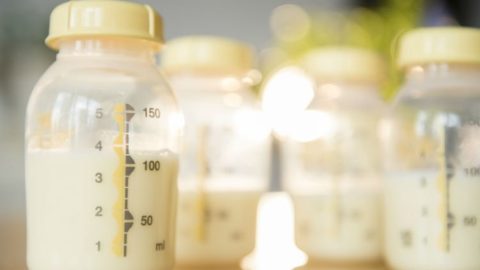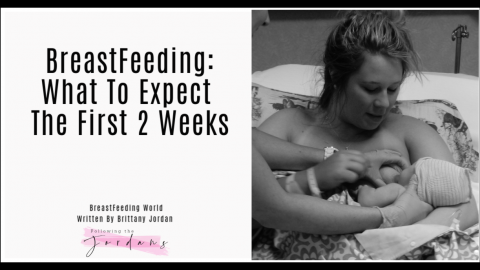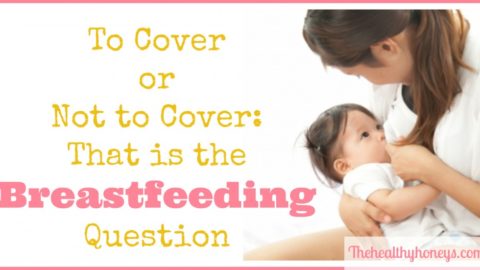Breastmilk is amazing, yes, but neuroscience shows that breastfeeding has many benefits that extend beyond the milk itself.
Have you heard of oxytocin? It’s a hormone most famous for its role in childbirth and nursing. Oxytocin gets contractions going, and in breastfeeding it goes hand in hand with prolactin, the hormone that’s in charge of milk production.
As if birth and milk weren’t amazing enough, I read the Oxytocin Factor by Kerstin Moberg and learned that oxytocin is also a neurotransmitter! Oxytocin has the power to reshape my brain? Impressive. So what else can this super-hormone and neurotransmitter do?
I was astonished to learn that oxytocin is not just present during childbirth and breastfeeding, and not only in women. It’s the hormone of love and good feelings, and it basically makes the world go round.
People are even exploring the role of oxytocin in our everyday relationships, like in this Ted Talk by Paul Zak.
This “love hormone” runs through the bloodstream and nervous system of babies and adults, humans and animals. We experience high levels of oxytocin during a massage, a good meal with friends, or when making love. When oxytocin levels are high, we feel happy, in love, and calm. The highest levels of oxytocin are present during orgasm and a gazillion times more during childbirth.
Breastfeeding mothers have a very good deal. This “feel good” hormone increases in their body and in their baby’s at every nursing session. The lovey dovey drowsy feelings that come over them are all thanks to oxytocin.
Determined to breastfeed? Check out 5 Essential Breastfeeding Tips here.
So, what are the benefits of high oxytocin levels, besides making you feel happy and sleepy?
1. Bonding
Baby bonds with the mother, and is more likely to recognize her in the future.
Mother bonds with baby, and is more likely to interact with her or prefer her over other babies.
2. Learning
Because oxytocin is also a neurotransmitter, it has the ability to create new pathways in the brain. Oxytocin supports learning and the adapting to a new life (for both parents and baby).
3. Digestion
High levels of oxytocin are associated with more effective digestion. Babies take in more nutrition and show increased growth. This is another reason to make mealtime enjoyable as babies grow into toddlers. It’s not easy, but kids who are not stressed will digest better. Learn about my imperfect approach here.
4. Lower blood pressure
Oxytocin calms the nervous system and lowers blood pressure, resulting in relaxation in both adults and babies.
5. Increased circulation
Blood circulates at increased rates to the skin and other parts of the body. Check out your baby’s rosy cheeks, hands, and feet. They can be evidence of high oxytocin levels.
6. Feelings of calm
People feel satisfied, relaxed, and sometimes drowsy as oxytocin levels rise.
Good news for parents who do not breastfeed
Nursing is only one of countless ways to experience high levels of oxytocin. Here are a few more:
Touch
One reason oxytocin increases in nursing mothers and babies is because they are touching each other. But you don’t have to be nursing to be touching, obviously. Baby’s warm body against another (especially skin touching skin) releases oxytocin into the nervous system and bloodstream of both baby and adult. The adult’s blood vessels become dilated as blood flow increases. You can see the same effect in the baby’s hands and feet, as they become more red.
Massage
Rhythmic touch increases oxytocin levels. Massage is good for both adults and babies.
Feeling warm
Snuggled up under blankets, or taking a warm bath can increase oxytocin levels.
Good food
The author of the book The Oxytocin Factor notes that food is like an internal massage. Eating carefully and slowly can maximize the effects of oxytocin while we eat. Babies drinking from a bottle can experience the same good feelings. Looking at your baby while she drinks, smiling, and interacting, can increase the amount of this love hormone.
Suckling
Whether on a nipple, pacifier, thumb, or bottle, the act of sucking produces oxytocin. All parents know that the fastest way to relax a baby is to let him suck on something. And science confirms what we already know.
Stay away, stress!
The stress hormone, cortisol, inhibits the production of oxytocin, and vice versa. Some stress is good for problem solving, moving away from danger, and for animals, defending their young. For new human mothers, however, it’s a good idea to keep the cortisol at bay. And the great news is that we can control our environment to some extent by doing all the aforementioned things.
So whether or not your are a breastfeeding mom, keep on snuggling, bathing, massaging, and eating. The more oxytocin we have in this world, the better!
When do you feel oxytocin vibes? Let us know in the comments. We love hearing from you and will always write back.
Did you like this article? Pin it to one of your Pinterest boards and keep it forever!
Be sure to join us in our social media accounts and be up to date with the progress of our project!
And… Don’t forget to share your brelfies using our hashtag
#BreastfeedingWorld
Anne Kathryn Rice is an American mother of two strong willed children living on the Italian Riviera. She writes about motherhood and listening to your inner voice, even when cultural expectations, baby books, and impromptu advice seem to challenge your instincts. You can read more about her personal experiences on her blog.












